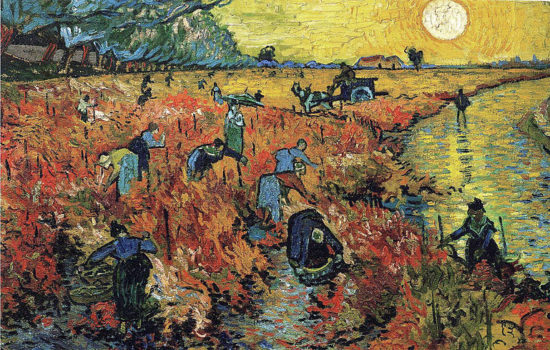The past year brought with it the EU review of the legal framework regarding the novel foods- We are talking about the new Regulation (EU) 2015/2283 from the European Parliament and by the Council, November 25, 2015, focusing on novel foods and replacing Regulation (EC) No 258/1997.
After almost eight years from the first Commission proposal, the new unionist regulatory framework concerning novel foods was significantly altered. It provides for a centralised authorisation procedure at EU level, a better definition of the field of application, new provisions on nano-ingredients. It has an albeit temporary clarification, on the case of food produced from cloned animals. An opening to entomophagy, and a more agile procedure for market access to traditional products from third countries.
NOVEL FOODS: THE INTERNATIONAL FRAMEWORK AND THE CURRENT EUROPEAN DISCIPLINE
Food is an essential feature of any society and it is coherent that it changes along with the latter. As was observed by a food historian, the core values of the nursing experience are the outcome and representation of cultural processes. They include domestication, processing, reinterpretation of nature. However, concepts like naturalness and tradition trigger in the modern consumer an attraction, often overvalued, harbinger of cases that show actual invention of traditions.
During the second half of the 1990s, perhaps in response to the increased traffic due to the removal of tariff and non-tariff barriers imposed by agreements of the WTO (World Trade Organization), some countries have adopted specific legal disciplines for entry on their territory of foods unknown by local culinary traditions, or resulting from use of new technologies.
For “new food” (or novel food) meaning a food whose consumption by humans is not consolidated in a given geographical area (in our case the EU), and that has significant differences concerning the method of production, manufacturing, extraction or otherwise.
The qualifying trait lies in what’s new in several aspects. Food ingredients with a new or intentionally modified primary molecular structure (this is the case, for example, of isomaltulose used as replaced sucrose sweetener because, due to the chemical structure that distinguishes it, has a reduced impact on blood glucose and insulin levels). Food andingredients consisting of or isolated from micro-organisms, fungi or algae (as is the case, among others, of lycopene by extraction and crystallization from a fungal fermentation of Blakeslea trispora). Food and ingredients made from plants, or isolated from plants, and food ingredients isolated from animals (as in the case of rye bread with added phytosterols/phytostanols or diacylglycerol oil of plant origin or of noni juice). It covers also those products and food ingredients to which has been applied a production process not often used, inas far as that process adds significant changes in nutritional value, metabolism or level of undesirable substances to the composition or structure of the product or food ingredient (this is the case, for example, of trehalose from yeast extract but chemically identical to that obtained with a newor enzymatic process with a sweetening power approximately 40-50% compared to sugar and more stable in terms of pH).
On the international stage, coeval Regulation EC No 258/1997, points out rules in Canada, Australia and New Zealand adopted disciplines and, more recently (2007) China. Other jurisdictions, such as India, South Korea and Israel have draft laws. In all cases the regulatory intervention revolves around the rule of prior authorization for access to domestic market.
As regards the EU, authorisation and use of novel foods and novel food ingredients has been harmonised in the European Union since 1997, whenRegulation (EC) No 258/97 concerning novel foods and novel food ingredients was adopted. The current legislation consists of the novel foods regulation (Regulation (EC) No 258/97) and by a Commission Regulation (Regulation (EC) No 1852/2001).
According to the 1997 regulation, an application for authorization before entering the market is preliminarily assessed by the competent food assessment body of a Member State (MS). The Commission forwards its initial assessment report to all Member States for comments and objections. If no grounded objections are raised regarding safety, then novel food may be placed on the market. In the event that safety-related objection are raised, an authorising decision is required by the Commission. In most cases this involves an additional assessment carried out by the European food safety Authority (EFSA).
In accordance with current legislation, the authorisation shall be granted to the applicant (individual authorisation), being such decision the formal tool, which is addressed to specific recipients. Moreover, another applicant may notify the Commission on the introduction in the market of a certain foodstuff essentially equivalent to that authorized. The notification shall be substantiated by scientific evidence demonstrating substantial equivalence of the foodstuff to that authorized. Those rules have allowed the placing on the market of various food products, such as dried baobab fruit pulp, chia seeds, a peptide product of fish origin (Sardinops sagax) or synthetic K2 vitamin.
THE NEW EUROPEAN DISCIPLINE: NEWS HIGHLIGHTS
The new unionist framework regulation 2015/2283 sought to change deeply the regulatory framework for novel foods in an openly simplifying way, by abrogating Regulation (EC) No 258/1997.
THE APPLICATION SCOPE: INSECTS, NANO-INGREDIENTS AND FOOD FROM CLONED ANIMALS
First, the scope of the regulatory discipline is updated and more precisely defined. In particular, the inclusion of whole insects and their parts, is clearly indicated by the new regulation. On this subject we note the recent Opinion of EFSA “Risk profile related to production and consumption of insects as food and feed”, in which the European Authorities clarify potential biological and chemical harzards, related to the consumption of such food.
This new category is added to others which Regulation (EU) No 2015/2283, changing from previous regulation, redesigns. Foods with a new or intentionally modified molecular structure. Foodstuff from cell cultures or tissue cultures obtained from animals, plants, micro-organisms, fungi or algae. Foodstuff obtained from micro-organisms, fungi or algae and food obtained from materials of mineral origin. Food from vegetable origin obtained by non-traditional growing practices, where those practices involve significant changes in the composition or structure of the food in as much as to affect its nutritional value, metabolism or level of undesirable substances.
A particular attention is given to food consisting of engineered nanomaterials. As we know the term “engineered nanomaterials” is currently defined by the Regulation (EU) No 1169/2011. Because the Nano-ingredients areconsidered novel foods, the definition of engineered nanomaterials, consistently with the relevant conferral of powers delegated to the Commission, both should be deleted from the Regulation (EU) no 1169/2011, and replaced by a reference to the definition stated in Regulation No 2015/2283. That regulation stipulates that the Commission should, by delegating acts, adapt and reformulate the definition of engineered nanomaterials to scientific and technological change or by internationally agreed definitions. On this point, EFSA has published on 2011 the Guidance on the risk assessment of the application of nanoscience and nanotechnologies in the food and feed chain .
Regulation No 2015/2283 holds also the merit of having reached an agreement at European level on foods derived from cloned animals. A matter on which previous Commission’s legislative initiative of 2008 had in fact run aground. The regulation clarifies that food derived from cloned animals falls within the scope of the novel foods discipline under “foods obtained by non-traditional breeding practices”. It forecasts, but only in the introductory concerns, specific regulations on food derived from cloned animals, and establishes the obligation of appropriate labelling for final consumers, in accordance with present Union’s legislation.
It is also timely the provision (article 4) which regulates the ways in which you can determine whether or not a food or ingredient fallsinto legal regulationof Reg. 2015/2283. In case that food business operators wish to place on the Union market food they unsure if covered by the novel foods regulation, then food business operators shall consult the Member State in which they intend to enter the market for the first time. Food business operators shall provide the required information to the Member State in order to enable the latter to determine whether a food falls within the scope of this regulation. The requested Member State may consult other Member States and the Commission. On this point the Commission may adopt implementing acts relating to procedural steps of the consultation process, including the terms and steps aiming at making the status publicly available.
THE NEW AUTHORISATION PROCEDURE
In a second stance, the new regulation abandons the previous mixed system comprisingMember State-Commission which proved inefficient. It establishes a centralised authorisation procedure at EU level, whereby all applications for authorisation of novel foods must be submitted to the Commission. The Commission, assisted by the Standing Committee on the food chain and animal health (SCFCAH), evaluates whether including a novel food on the list of the Union, taking into account the EFSA opinion.
It is worth noting that individual licensing authorizations, established in the 1997 regulation, are replaced by generic permissions. This is also reflected on the legal instrument provided for in the new discipline. No more decisions, but an implementing acts of general scope, resulting, however, from the positive performance of the committee procedure (examination procedure) provided for in Regulation No. 182/2011.
For the same reason the so-called “simplified procedure” provided for by the previous regulation, based on substantial equivalence, intended to extend an individual authorisation to another company for the same novel food, is eliminated because permissions become automatically generic.
In this context, in order to ensure a control over the market of equivalent products, European-level regulation establishes the institutionalization of market monitoring, already active in some Member States, such as Italy. There, the Health Ministry requires notification, for monitoring purposes, of the addition of phytosterols and foods with added lycopene. The Commission may now introduce monitoring obligations, after the placing on the market of new food, so as to control it remains into the safety limits established in the risk assessment carried out by EFSA.
Novel foods already authorised shall continue being sold and will be listed amongthe Union of novel foods.
The new procedure for authorization(pre market approval) can be started by the applicant, or upon the initiative of the Commission. The latter hypothesis under Reg. (EC) No 258/1997. The question of the applicant must include: a) the name and address of the applicant; b) the name and description of the novel food; c) the description of the production process; d) the detailed composition of the novel food; e) scientific evidence showing that the NF has no safety risks to human health; f) where applicable, the analysis method(s); g) a proposal on the conditions of use and labelling requirements so as not to mislead consumers, or verifiable justification explaining why these elements are not necessary. In the case of engineered nanomaterials authorizations, the applicant shall provide an explanation of the scientific suitability of the analytical methods applied and, when appropriate, of the adaptations or technical adjustments that have been made to take account of the specific characteristics of the materials under scrutiny.
EFSA’s intervention is only possible after a request from the Commission, which must be submitted within one month of the verification of the validity of the claim. EFSA is required to express its opinion within nine months of receiving a valid application, unless additional information is requested by EFSA. Regulation provides for the enablingthe applicant to provide additional information at their own initiative to EFSA, but in that case the nine months termremains unchanged.
According to the new regulation, when assessing the safety of novel foods, it is necessary to consider “if appropriate” the following elements.
a) the safety of a novel food is equal to that of food that fall into a comparable categoryalready present at the Union market; b) the composition of the novel food and its using conditions do not pose a security risk to human health in the EU; c) If a novel food is intended to replace another it should not differ in such a way as to make its normal consumption nutritionally disadvantageous for the consumer.
From the date of publication of the EFSA’s opinion, there is a time span of seven months. Within that period, the Commission is required to submit to the Committee a proposal for an implementing Act, authorising the placing of a new food in the EU market,and an update of the Union’s list. In the case that scientific opinion is not required, the term of seven months for advancing the proposal in Commission shall start on the date of receipt of the valid application.
Regulation states, in its art. 12, those conditions of legitimacy for the adoption of the final permission act, and as we’ll see, those are the same ones that apply to the authorization of the traditional products of third countries. Firstly we must ascertain
• absence of risks for human health,
• non-deceptiveness of its intended use, in particular when the food is intended to replace another food and there is a significant change in its nutritional value,
• in the absence of objection at the nutritional level for teh food the novel productis intended to replace
In addition, the Commission, and the Committee must take into account EFSA’s opinion, if adopted, with the “precautionary principle referred to in article 7 of Regulation (EC) No 178/2002” and “any other legitimate factors relevant to the question under consideration ‘.
The final act is an Act adopted in accordance with the procedure laid down in art. 30.3 of Regulation No 2015/2283. This means that if it applies the examination procedure laid down in regulation Regulation (EU) No 182/2011 of the European Parliament andthe Council’s from of February 16, 2011 stating the rules and general principles concerning control mechanisms by Member States in the exercise of implementing powers conferred to the Commission.
SIMPLIFIED ACCESS FOR TRADITIONAL FOODS FROM THIRD COUNTRIES
Last but not least the important news concerning the authorisation for traditional foods from third countries that have historically proved safe for food use.
The new rules are the result of a long dispute between the EU and some countries, repositories ofattractive vegetable genetic resources in commercial aspects, and, indirectly, the economic development of thrusters in less industrialized areas .
At WTO level, in fact, some criticism rised from some Member of the Andean region, to the effect that the procedure for accessthe European market was too restrictive. More precisely, Peru argued that the discipline of Reg. 258/1997 constitutes “an unjustified barrier to trade,” taking as a parameter of legality the SPS Agreement(WTO Agreement on the Application of Sanitary and Phytosanitary Measures).
The goal of the Andean country was clear. To get the exclusion of its traditional products from the scope of the novel foods regulation. Goal not fully met, as the EU maintains the principle of market approval although it has extensively simplified the rules and requirements, and narrowed the terms for the conclusion of the proceedings authorization with respect to the first regulation.
Firstly, regulation defines “history of safe use as a food in a third country ‘, ifsuch requirement remains, then applies the application of the simplified proceduresprovided for in articles 14-20. With this expression it means that ” safety of the food under scrutiny is confirmed by data on its composition and experience of continuous use for a period of at least 25 years, in the usual diet of a significant number of people in at least one third country (omitted)”.
Thus, overturning the previous regulatory framework that the Court of justice had interpreted as “the experience on the safety of a food product acquired exclusively outside Europe is not enough to declare that it falls into the category of foods” which have historically proven safe food use ‘ within the meaning of art. 1, # 2, lett. e) of Regulation No 258/97 “(Judgment of the Court of Justice, January 15, 2009).
In detail, the procedure involves, first, a simple notification which the applicant shall submit to the Commission. If such notification is fulfilled, it’s forwarded to the Member States and to the authority ” without delay and within one month after verification of the validity of the notification “. From this moment starts the period of four months for a Member State or the EFSA to present the Commission with duly justified objections concerning safety to the placing on the market of the Union of that traditional food under scrutiny.
In the absence of objections, the Commission shall authorise the placing in the market of the Union traditional food, and update without delay the Union’s list. The list must point out that this is a traditional food from a third country. Obviously remains valid the right of the Commission to determine certain conditions of use and to determine specific labelling requirements or any monitoring requirements after the admission tothe market.
In the event of duly founded objections, however, the Commission cannot authorise the introduction in the Union’s market of theof traditional food concerned. I cannot either update the list of the Union. In such case, the applicant may open a separate procedure that follows the actual precise licensing process by submitting an application to the Commission. In this procedure, the risk assessment is always required, as evidenced in art. 17.1 It states that EFSA should express an opinion within six months of receipt of a valid application (deadline may be extended in duly justified cases, whereas additional information is required). EFSA is required to consider the following factors: a) If history of safe use as a food in a third country is confirmed by reliable data; b) if the composition of the food and the ways of use, do not present a security risk to human health in the EU; c) If, in case a traditional food from a third country is intended to replace another, it shouldn’t differ from the latter in such a way as to make its normal consumption nutritionally disadvantageous for the consumer.
Within three months after EFSA’sopinion is released, the Commission must present the SCFCAH with a proposal of implementing Act, authorising the access to the EU market of a traditional food from a third country.
The requirements for authorization in this case are the same as those required for the case of authorization of other novel foods. Indeed, the regulation states that for the purposes of the adoption of the implementing Act, and therefore the decision on market access should consider
• the general conditions for inclusion of new foodstuff in the Union list. IE, no security risk to human health;
• absence of deceitfulness regarding the intended use, in particular where the food is intended to replace another food and there is a significant change in its nutritional value;
• absence of assumptions on the novel food nutritional value in relation to the food it’s intended to replace;
• the precautionary principle referred to in article 7 of Regulation (EC) No 178/2002;
• the opinion of the authority; and
• “any other legitimate factors relevant to the matter under consideration ‘.
DATA PROTECTION AND CONFIDENTIAL INFORMATION
Authorization rules pose a special attention to the protection of investments in research and development. New scientific evidence and new data protected by industrial property provided in support of an application for inclusion of a novel food in the Union list, are granted protection for a limited time. This prevents others from using them without the consent of the applicant. It is not an industrial property right, like the patent of invention but a hybrid that tries to balanceprotection and promotion of research with minimal sacrifice of competition.
The regulation acknowledges the first applicant the right that new evidence or new scientific evidence presented in support of the application, shall not be used for the benefit of a subsequent application in the five years following the date of authorisation of new food, without the consent of the applicant. This kind of hybrid protective right is granted by the Commission if the following conditions are met: a) the new evidence or new scientific data were signaled as protected by industrial property of the applicant at the time offiling the first application; b) the applicant had exclusive right of refer to the initial evidence or to scientific data protected by industrial property at the time of filing the first application; and c) new food couldn’t have been assessed by the Authority and approved if the applicant had not presented evidence or scientific data, protected by industrial property rights.
In any case, the initial applicant may agree with the subsequent applicant the possibility of using such evidence and scientific data. When data protection pursuant to article 26 shall be granted, it must be stated in the list.
The same reason of R&D investment protection, meets other provisions which allow the applicant to request that certain information submitted in accordance with Regulation are subject to confidential treatment, in cases in which disclosure of such information might harm their competitive position.
ENTRY INTO FORCE, TRANSITIONAL MEASURES AND CONTROLS
Regulation No 2015/2283 enters into force on January 11, 2016 and will become applicable from January 1, 2018, except for those provisions that recognize delegated legislative powers to be exercised by the Commission.
Applications for the introduction intothe EU market of a new food, presented with the old regime set out in Regulation (EC) No 258/97 and for which it is assumed any final decision by January 1, 2018, will be considered, as of this date, questions under the new regulation.
For applications filed under the old regime in respect of which there is alreadya risk assessment conducted by a Member State, opinion of EFSA is not required, provided that no other Member State has objected founded reasons to them.
Food not actually falling under the scope of Regulation (EC) No 258/97, which are legally placed in the market before January 1, 2018 and falling within the scope of the new regulation, may continue to be marketed until the adoption of a decision.














